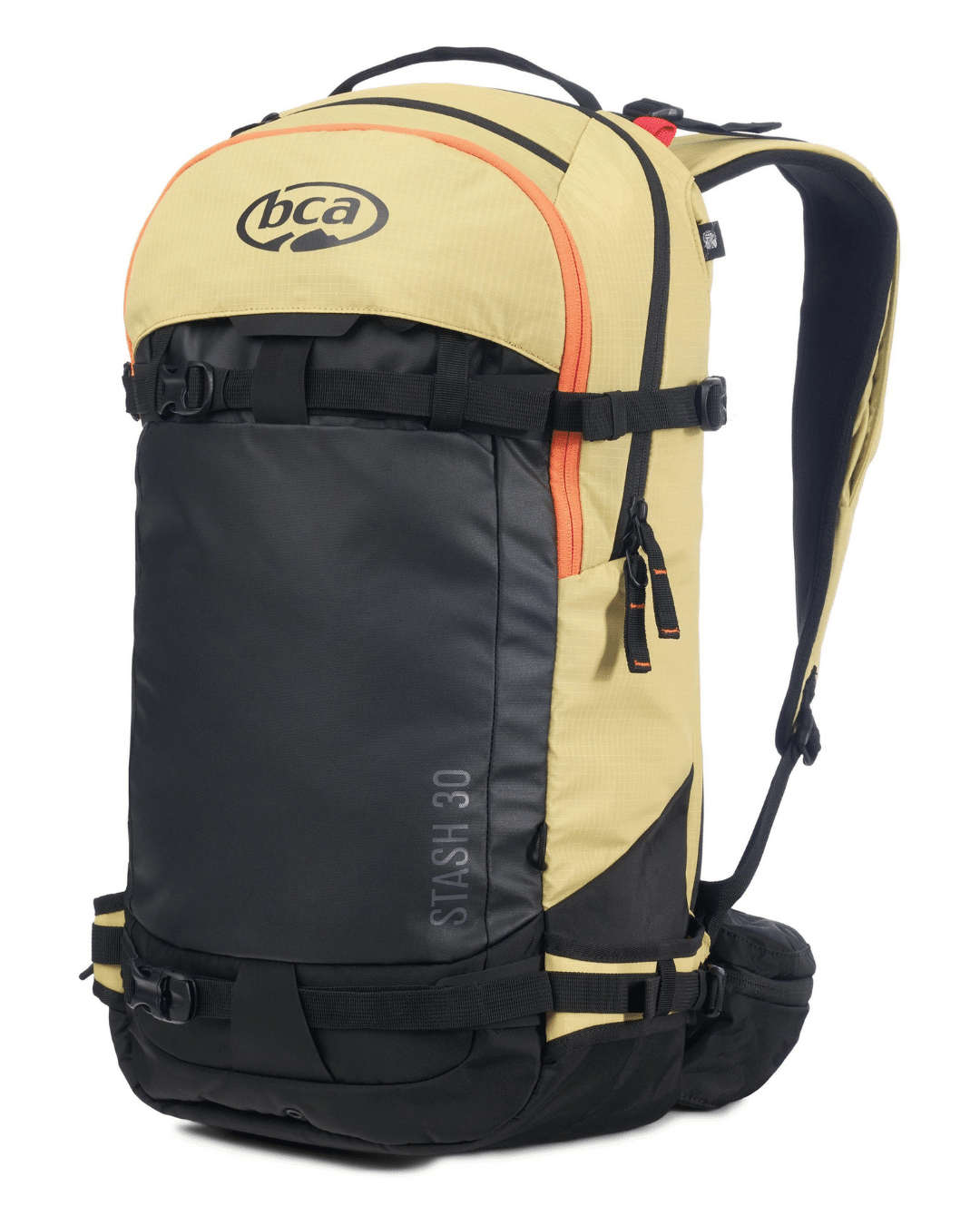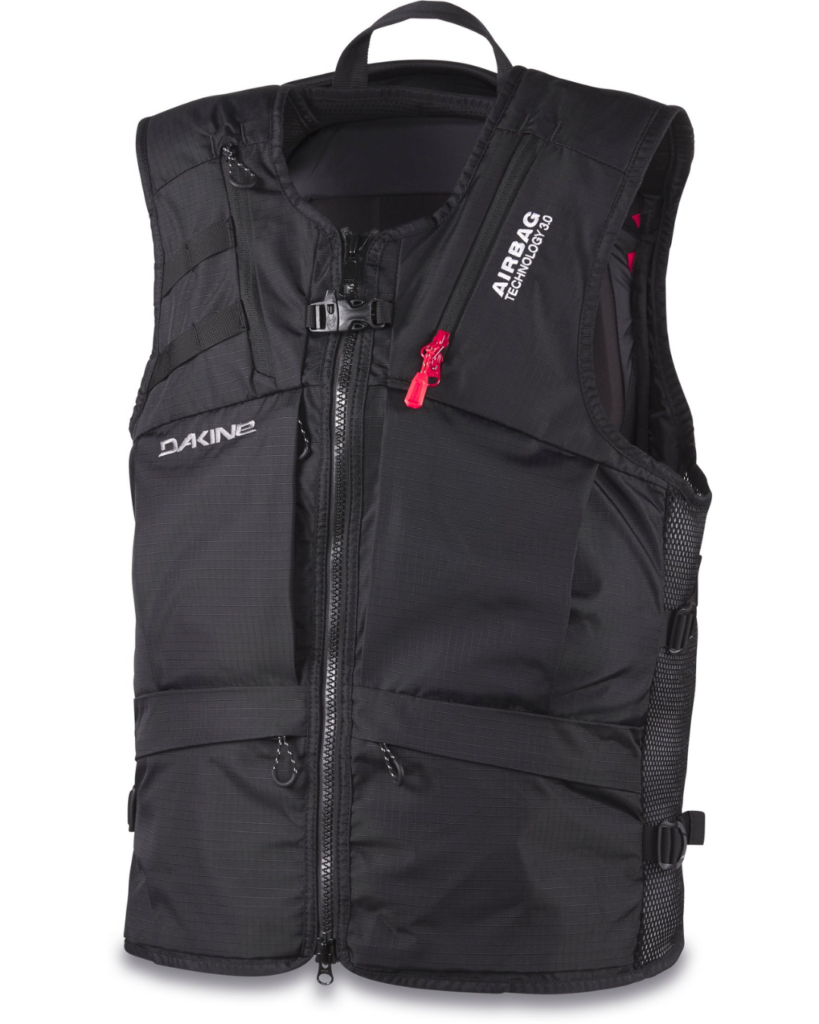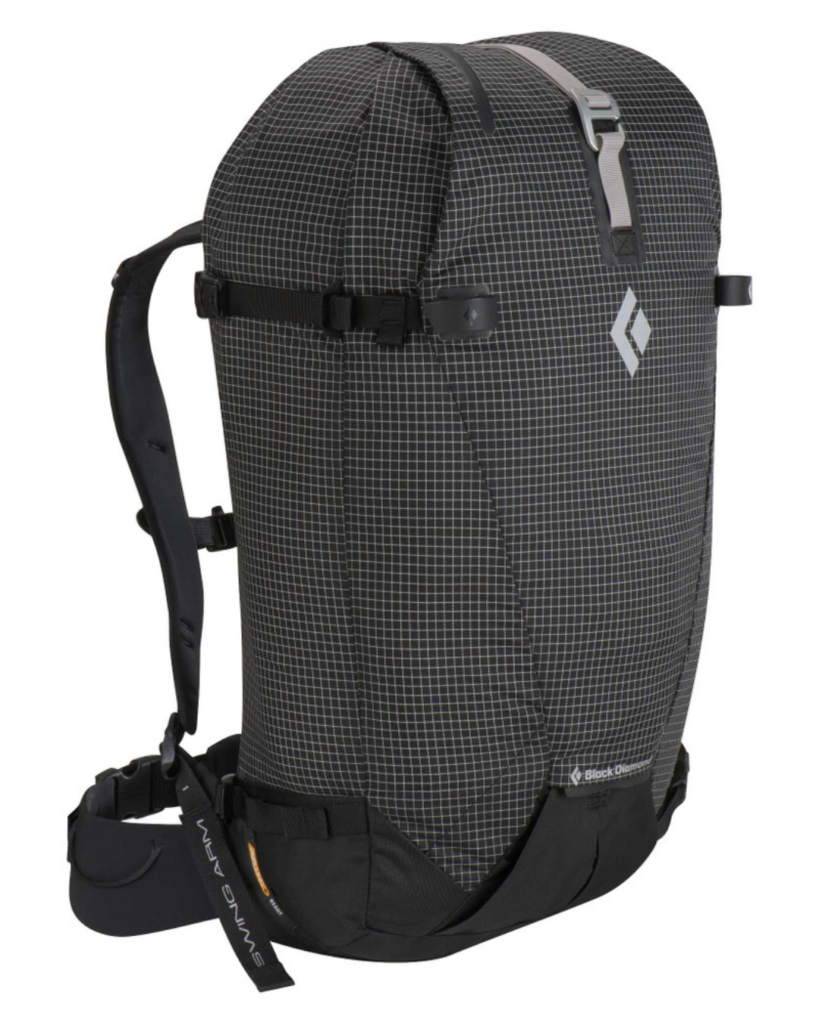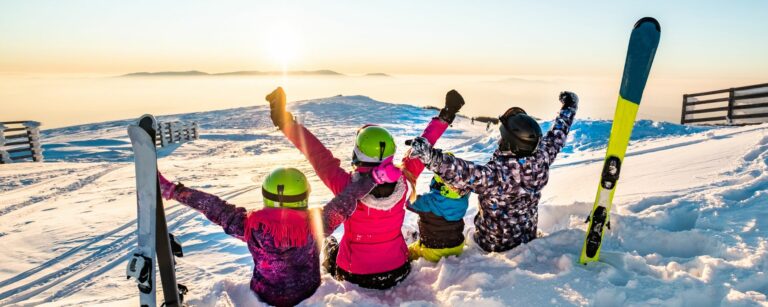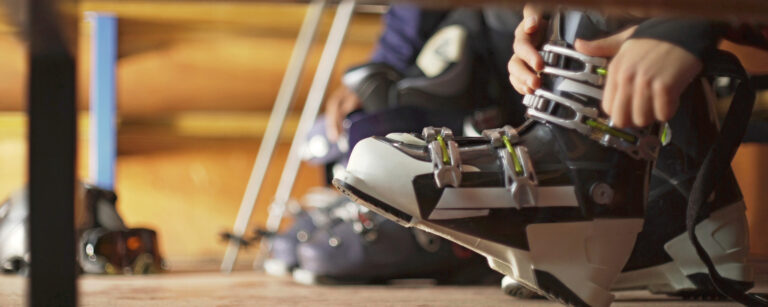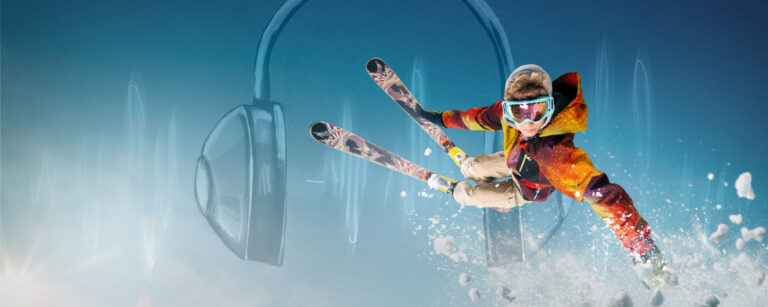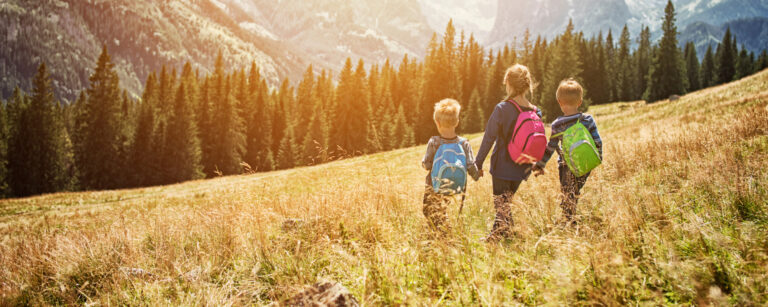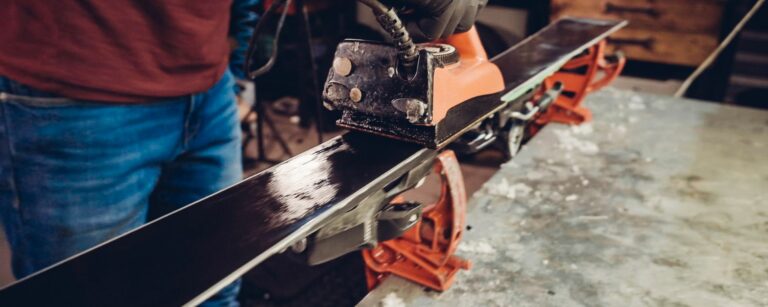7 Best Ski Backpacks of 2024
If you’ve spent a day in the mountains, you know the value of a good ski pack.
Keeping all your critical items accessible as you explore is a challenge. Extra water, snacks, a spare pair of gloves, or goggle lenses handy where you can use them without a pack is next to impossible. Not to mention if you have kids or are heading into the backcountry.
A good pack will let you keep your things and safety gear with you no matter where you end up.
I spend 100+ days skiing in the mountains every year, and I wear a pack for half of them. On the hill, I often carry camera equipment, or when I’m touring in the backcountry, I must bring avy gear for safety.
In this article, I will go through the best ski backpacks, from budget-friendly resort packs to high-end airbags.
Our Top Picks
Best Overall
Dawn Patrol 32
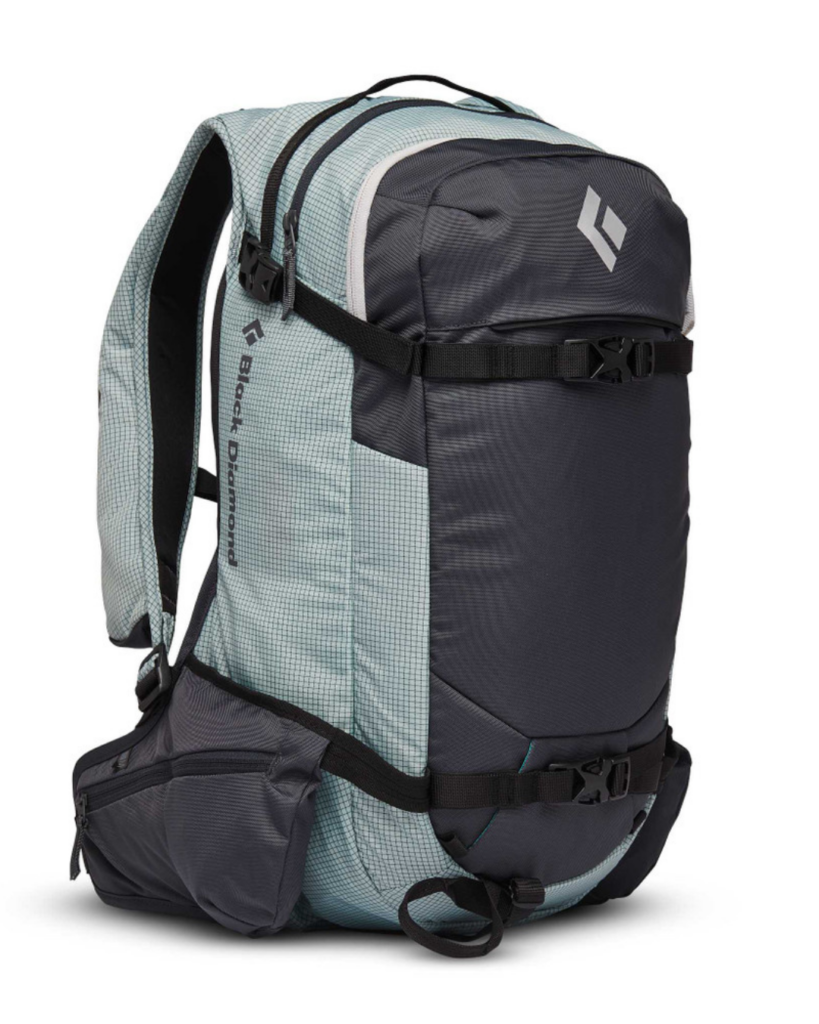
Key Features
Best Budget
Mission Pro 18L

Key Features
Best Airbag
Soelden/Sopris 32

Key Features
When it comes to a ski backpack, there are a lot of great options on the market. But with so many choices, knowing which one is right for you can be challenging. You’ll want to consider a few things before purchasing a ski pack:
- Think about the type of skiing you’ll be doing. Are you an avid backcountry skier, or will you primarily be hitting the resort?
- Consider the size and feature set that best suits your needs.
- Don’t forget to factor in the price.
Now that you know what to look for, let’s get started!
What Is The Best Ski Backpack?
Here is our ranked and reviewed list of the Best Ski Backpacks.
The 7 Best Ski Backpacks
- Best Overall – Black Diamond Dawn Patrol 32
- Best Budget – Dakine Mission Pro 18L
- Best Airbag – Ospre Soelden/Sopris 32
- Best Ski Touring – BCA Stash 30
- Best Vest – Dakine Poacher RAS
- Best Resort – Osprey Glade 12
- Best Large – Black Diamond Cirque 45
Pros
Cons
Specs
- Use: Day Touring
- Capacity: 15L, 25L, 32L
- Weight: 2.5lbs (1.17Kg)
Key Features
- Hydration bladder sleeve
- Ice axe straps
- A-frame and diagonal ski/board carry
The Black Diamond Dawn Patrol is an all-purpose backcountry ski backpack. It’s full-featured, but still very lightweight and sleek. The main compartment is roomy enough to store all your gear and has an internal sleeve for a hydration bladder. An integrated avy tools pocket holds all your safety gear, while the front zip pocket is ideal for smaller items.
The pack has a zippered back panel access and external straps to hold your helmet and ice ax. The shoulder straps are padded for comfort, and the hip belt is adjustable to ensure a perfect fit.
The pack allows you to carry skies diagonally or A-frame, while the snowboard carry system is vertical.
The Black Diamond Dawn Patrol 32 is the best overall bag because it has many features and is still very lightweight. It’s comfortable to wear, even when fully loaded, and can carry all the gear you need for a day in the mountains.
The Patrol also comes in a resort-friendly 15L and versatile 25L size, while the 32L is large enough for most day tours. Whether lapping the side country or looking to venture deeper into the mountains, the Black Diamond Dawn Patrol 32 is the best pack.
Pros
Cons
Specs
- Use: Side Country/In-bounds
- Capacity: 18L
- Weight: 1.6lbs (0.7Kg)
Key Features
- Shovel and probe pocket
- hydration compatible
- vertical carry
Designed for resort laps, the Mission Pro 18L is our pick for the best budget ski pack. Despite its small size, this pack has room for all your essential gear, including a shovel and a probe. It is hydration-compatible with an insulated shoulder sleeve, has a fleece-lined goggle pocket, and can carry a snowboard or diagonal skis vertically.
With a $80 price point, though, you do have to make some sacrifices. The pack is not as durable as some pricier competitors and has a limited 18L capacity. Additionally, it has limited strapping, meaning less compression; it will not A-frame carry your skis, and you are missing a zippered back compartment access.
However, if you are looking for a light and affordable bag, the Dakine Mission Pro is an excellent option for in-bounds and short-day tours.
Pros
Cons
Specs
- Use: Backcountry Day Trips
- Capacity: 32L
- Weight: 6.4lb (2.9Kg)
Key Features
- Men’s and women’s versions
- AA battery powered
The Soelden Pro E2 32 by Osprey features Alpride’s E2 supercapacitor-powered fan. Like all of Osprey’s ski packs, it offers exceptional comfort due to the suspension hip-belt and back panel design.
Osprey caters directly to women riders with the Sopris Pro E2. A smaller pack that has been designed specifically for a woman’s build. It offers the same excellent features in a smaller package designed for women.
The Soelden and Sopris come in one color, red mountain. The fabric is lightweight and abrasion-resistant. It integrates ultra-high-molecular-weight polyethylene that will stand the rigors of the backcountry.
With a steel frame for rigidity and USB and AA recharging capability, it is my top pick for avalanche airbags. I especially like how they have men’s and women’s sizing.
My only complaint is how challenging adjusting the harness can be. The metal buckles can be a challenge to adjust with gloves on.
Pros
Cons
Specs
- Use: Day Touring
- Capacity: 30L
- Weight: 3.3 lbs (1.49Kg)
Key Features
- Avy tool pocket
- Back panel zip
- Hydration compatible
The Backcountry Access Stash 30 is the best touring backpack. It has a dedicated tool pocket for a shovel, probe, and saw. As well as BC Link radio integration, insulated hydration shoulder sleeve, compression straps, and more.
The best part about the Stash 30 is that it is light enough to not slow you down while touring and has enough space (30L) to store everything you need for a day or multi-day trip.
BCA has a reputation for making high-quality backcountry products, and the Stash 30 backpack is no exception. The BCA Stash 30 should be at the top of your list if you are looking for a top-of-the-line ski touring backpack.
Pros
Cons
Specs
- Use: side-country/in-bounds
- Capacity: 12L
- Weight: 3.2 lbs (1.4 kg)
Key Features
- Lightweight
- RAS compatible
The Dakin Pacher RAS Vest is the ultimate lightweight, minimal vest backpack. The vest style makes it more comfortable to wear while skiing, and the low profile won’t get in the way on chairlifts. It has just enough room for the essentials like a shovel, probe, water, and snacks. Despite its small size, it’s even airbag compatible, sporting the Mammut removable airbag 3.0 system (sold separately).
Since its debut, the Pacher RAS vest has been a big hit. It’s the perfect backpack for side country, inbound laps, or snowmobiling. Its light and compact design make it ideal for days when you don’t need to carry a lot of extra gear.. It has all the features you need, like an avy gear pocket and front access pockets for storage, and it feels like you are wearing a regular coat when skiing.
I use my vest for quick side-country trips or in the resort, carrying camera gear for photo or video work. The vest is super low profile with tons of pockets, making it the ideal tool for short trips where you don’t need a large pack. I often use the pack over a soft shell in the springtime to carry needed gear with minimal insulation.
The Poacher RAS is the tool of choice if you want the best minimal, lightweight pack option with all the critical features.
Pros
Cons
Specs
- Use: Resort
- Capacity: 12L
- Weight: 2lb (920 g)
Key Features
- 3 compartment
- Hydration compatible
- Padded Harness
The Osprey Glade 12 is streamlined for the resort. Designed specifically with a low profile to easily fit over your ski jacket and still allow you to ride the lift with ease/
The pack doesn’t have a ton of features, but that’s not what you’re after when skiing in the resort. It does a great job carrying the essentials without getting in the way. The 2.5L water reservoir is great for carrying a hydration pack while leaving enough space to fit an extra layer and some snacks.
Skiers and boarders with kids will love the size and profile of the pack. It’s great for carrying extra mittens and snacks to keep the kids going on those cold days.
Pros
Cons
Specs
- Use: Climbing/Ski Mountaineering
- Capacity: 45L
- Weight: 3.4lbs (1.06Kg)
Key Features
- Active, form-fitting suspension
- Avy tool pocket with drain holes
- Diagonal ski carry and A-frame carry
The Black Diamond Cirque 45 is a technical ski mountaineering pack for big missions and overnight trips.
The active suspension is ideal for larger loads and stops the pack from moving during descents. The single pull closure system, slide-in avy tool pocket, and rope/ice axe attachments make it ideal for backcountry and ski mountaineering adventures.
The helmet holder can be easily concealed when unused, and the pack does well under moderate loads. It is excellent for extended trips but is a little small for overnights.
FAQ
Should I ski with a backpack?
Skiing with a backpack is a personal choice and depends on how you spend your day. Many resort skiers prefer to ski without a pack because they don’t need to carry that much and don’t want the extra weight or bulk. For backcountry skiers, however, a ski bag is a must. Avy gear, food, water, and extra clothing are essential to safety outside the resort. If you need to carry anything with you, make sure to include a backpack when packing for skiing.
How big of a backpack do I need for skiing?
The pack size you need will depend on how you plan to use it. If you are only going skiing in the resort, a small pack like the Glade 12 will be enough to carry your essentials. You’ll need a larger pack if you plan on doing any serious backcountry skiing. A 30L pack will hold all the essential requirements for most day tours.
Why do free skiers wear backpacks?
Freeskiers often wear ski packs to carry avalanche gear, food, water, and extra clothing when they are outside of the ski resort. Backcountry skiing is risky, and having the right equipment with you can mean the difference between life and death. Freeskiers also tend to travel further away from the resort than other skiers, so they need a pack to carry all their gear.
Buyers Guide
Ski Backpack Categories
Resort
For resort skiers, a ski pack is mostly about storage and comfort. A ski backpack should be lightweight and low profile. You will get on and off chairlifts, and a large ski pack can get in the way. Straps should be stowable to prevent them from getting caught on the chairlift. A goggle pocket is a nice feature to protect your goggles and make them easily accessible when needed.
Touring
A backcountry bag is much more technical. Weight and space are essential as you will carry all your ski gear for an entire day in the backcountry. The pack should carry your critical avalanche safety gear in an easily accessible pocket in an emergency. Many ski packs include a place for a radio that can be accessed from a zippered shoulder strap.
If you are boot packing or snowshoeing, ski and snowboard carrying are essential. These features make it easier to attach your skis or board to the outside of the pack. When hiking if you wear a helmet it can get hot and sweaty. A good ski pack should have a helmet carry system that also allows you to carry skis.
The harness of ski touring packs should be designed to handle the additional weight without shifting while skiing. A good pack will do all of this while being lightweight and functional.
Touring packs range in size from 15L to 45L. Smaller bags are meant for side-country/resort skiing, where you want to carry safety gear and not much else. Larger packs are used when traveling further afield into the backcountry.
Mountaineering
Mountaineering packs have all the features of a touring pack with some additional items. They will have more loops and daisy chains to help attach gear to the outside of the bag. An ice ax carry system is essential, as is a place to stow your crampons.
As you carry heavier loads, a better suspension system is needed to keep the weight from pulling you backward. This is accomplished by having a more substantial hip belt and frame system.
Mountaineering packs come in two sizes, 40-60L+ for longer trips and 20-30L for day excursions.
Airbag
Airbag Backpacks are a particular type of touring bag that includes an avalanche airbag system. An airbag pack is designed to help prevent burial in an avalanche. The airbags inflate, making you more visible and buoyant in the event of an avalanche. This can help reduce injuries or even save your life.
An airbag pack is heavier and bulkier, so they are best suited for backcountry skiing or riding. Most pack brands offer an airbag system that can be purchased separately and added to one of their existing packs.
Ski Backpack Capacity
When considering capacity, first decide what kind of skiing you will be doing. If you are only resort skiing, then a smaller 15-20L pack is all you need. You won’t be carrying much gear and can get away with a smaller bag.
If you are venturing into the backcountry, you will need a larger pack in the 20L -35L range. This will allow you to carry all your necessary gear for a day trip.
And finally, if you are planning on spending multiple days in the backcountry or doing any mountaineering, then you will need an even larger pack in the 45L+ range.
Ski Backpack Features
Avalanche Gear Storage
Touring backpacks should include a separate pocket for your avalanche gear. It should be easily and quickly accessible in the event of an emergency. In the event of a burial, you want to be able to get your gear out as fast as possible.
Accessory Pockets
Most ski backpacks will have several accessory pockets for items like your phone, keys, snacks, etc. These should be easily accessible, so you don’t have to take your pack off whenever you need something.
Hip belt pockets are a great place to store energy bars, your phone or camera, and other small items.
Compression Straps
Compression straps help to stabilize the load in your pack. This is especially important for a backpack as you want the pack to stay stable and as close to your body as possible while skiing. Compression straps can also be used to attach skis or other gear to the outside of the pack.
External Attachment Points
Most backpacks will have loops or daisy chains outside the pack. These can be used to attach skis, poles, shovels, etc.
Some packs also come with an integrated helmet carry system. This is excellent if you take your helmet on and off while skiing.
Ski and Snowboard Carry
Most backpacks will have some sort of ski carry system. The most common is diagonal ski carry, where the skis are attached to the pack at an angle. This keeps the skis close to your body and makes them less likely to catch on things while you are hiking. Some backpacks also have an A-frame or a vertical carry system.
Final Thoughts
There you have it, the best backpacks for skiing. With so many great options on the market, it can be hard to decide which is right. But with this list, you should be able to narrow down your choices and find the perfect backpack for your needs.



